Why visit Sofia?
Sofia often flies under the radar when it comes to European capitals—but trust me, it shouldn’t. Bulgaria’s capital is a city of contrasts: a blend of Roman ruins, golden-domed cathedrals, moody communist architecture, and a thriving café culture that rivals its Western European counterparts. Whether you’re here for a quick stopover or using Sofia as a base to explore the Balkans, this itinerary will help you make the most of your time in the city—even if you’ve only got a single day.
Here’s how to spend a perfect day in Sofia, designed especially for first-time visitors who want to get a little taste of everything—history, food, nature, and a dash of rakia-fueled insight into Bulgarian life.
What You'll Find In This Post:
Morning: Coffee, Cathedrals & Roman Relics
Start your day at Coffee Syndicate Coffee House – voted best Bulgarian specialty coffee for 2025 by European Coffee Trip. Tucked just around the corner from your first sights of the day, it’s the perfect starting point for a whole day of exploring! It’s one of Sofia’s most beloved specialty cafés, with an industrial and modern vibe. Order a cappuccino, a flat white, or try their signature espresso fizz. Don’t forget to grab a homemade éclair, they are fantastic!
After coffee, take a short walk to St. George Rotunda, hidden in a courtyard surrounded by massive Soviet-era buildings that house the office of the President, the ministry of education and some other government offices. This red-brick church is Sofia’s oldest preserved structure, dating to the 4th century. Inside, you’ll find fading frescoes and candlelit corners. It’s a small but fascinating look into how Christianity survived through empires and upheaval. Surrounded by stark communist architecture, it’s a beautiful contradiction that sums up much of Sofia’s vibe.

After that, you can walk down Tsar Osvoboditel Street towards Sofia’s most iconic landmark: Aleksandar Nevski Cathedral. With its golden domes, ornate Neo-Byzantine design, and towering presence, it’s hard to miss. Step inside to see the dark, mystical interior—filled with candles, intricate orthodox iconography, and that unmistakable scent of incense and stone. Even if you’re not religious, the atmosphere is unforgettable. Next to it, you can also see the building of the Bulgarian Parliament that’s being renovated at the moment.
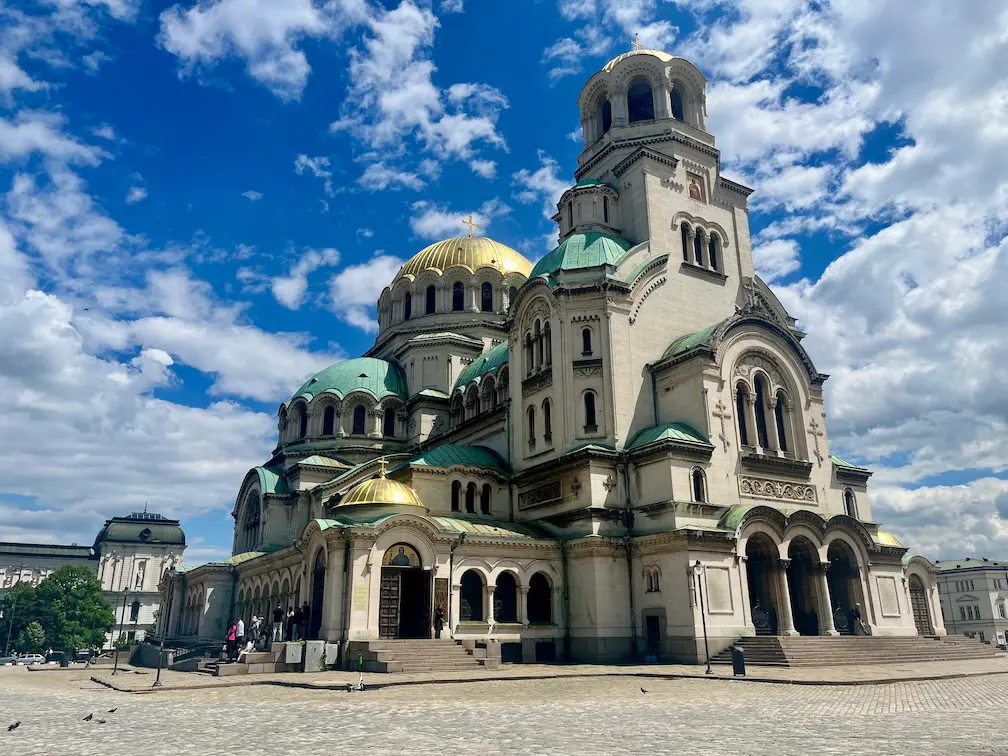
Right behind it is St. Sophia Church, one of the oldest churches in the city. It dates back to the 6th century and gave the city its name. Don’t miss the underground necropolis, where layers of Roman tombs lie beneath your feet—a quiet, somewhat surreal journey through ancient history.
Late Morning: Rakia and a Peek into Socialist Bulgaria
The Rakia Museum
Once you’ve soaked in the historic landmarks, it’s time to explore a more unconventional side of the city. So, before lunch, take a short 15-minute walk to something unique – The Rakia Museum.
Located near the National Art Gallery, this museum is a celebration of Bulgaria’s beloved spirit—rakia, a potent fruit brandy that we, Bulgarians, treat with the same reverence that Scots give to whisky. You’ll learn about the traditional distillation methods, the cultural significance of rakia in Bulgarian celebrations, and the regional differences (plum in the north, grape in the south, and everything in between).
They have three types of tickets, basically offering entry or entry plus a tasting session. You can read more and book your tickets directly on their website.
I would definitely recommend getting a ticket with a tasting session – if you drink alcohol – so that you can immerse yourself completely – just go easy if it’s before noon, it’s strong stuff.
The museum is cosy, informative, and a lot more fun than you might expect. A perfect cultural palate cleanser between the city’s heavier historic stops.
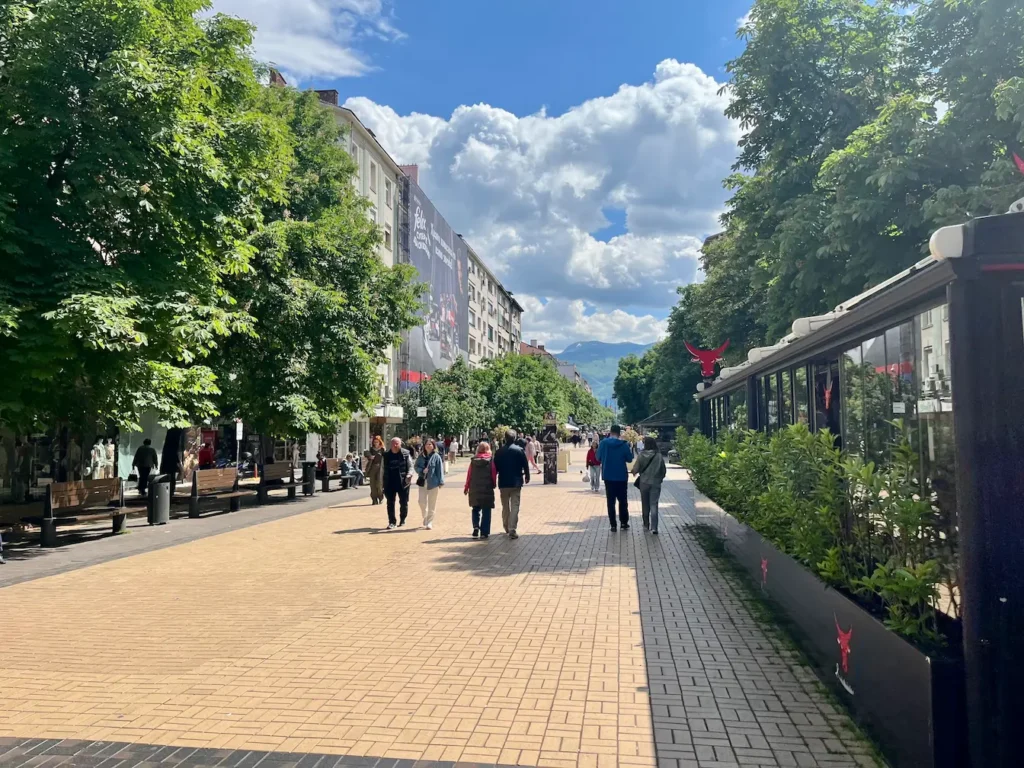
The Red Flat
From here, just a short walk away is The Red Flat—a brilliant, unique and interactive exhibit that recreates a middle-class Bulgarian flat from the 1980s communist era. It’s not just a museum; it’s an experience. When I visited, I felt like I’ve transported myself back to my grandparents’ flat. You walk through a fully furnished flat complete with family photos, an old rotary phone, a television playing propaganda reels, and a bookshelf stacked with state-approved literature. You’re handed an audio guide and told: “Explore as if you live here.” Open the fridge. Browse the magazines. Sit on the floral couch. It’s immersive, nostalgic, and gives real insight into daily life during Bulgaria’s socialist past.
Many museums explain communism through politics; The Red Flat does it through toothpaste, schoolbooks, and cassettes. It’s both fun and eye-opening.
The ticket is just 9 EUR and I would wholeheartedly recommend going, you won’t regret it!
Lunch: Traditional Flavors on Vitosha Boulevard
By now, you’ve likely worked up an appetite. Walk back toward Vitosha Boulevard, the city’s bustling pedestrian drag lined with shops, street performers, and cafés. Restaurant Shtastliveca, just 2 minutes away from the Red Flat is a solid choice here—conveniently located (Google Maps location) and wildly popular for good reason. The vintage decor feels like dining in someone’s living room, and the menu is a mix of traditional Bulgarian and more contemporary European fare.
Some food recommendations:
- Kyufte: Seasoned Bulgarian meatballs, juicy and flavorful
- Shopska Salad: Chopped cucumbers, tomatoes, onion, and grated sirene cheese—Bulgaria’s challenger to the Greek salad
- Kavarma: A rich, slow-cooked stew of meat, veggies, and spices served in a clay pot
- Homemade lemonade comes in all kinds of flavors, excellent on a warm day.
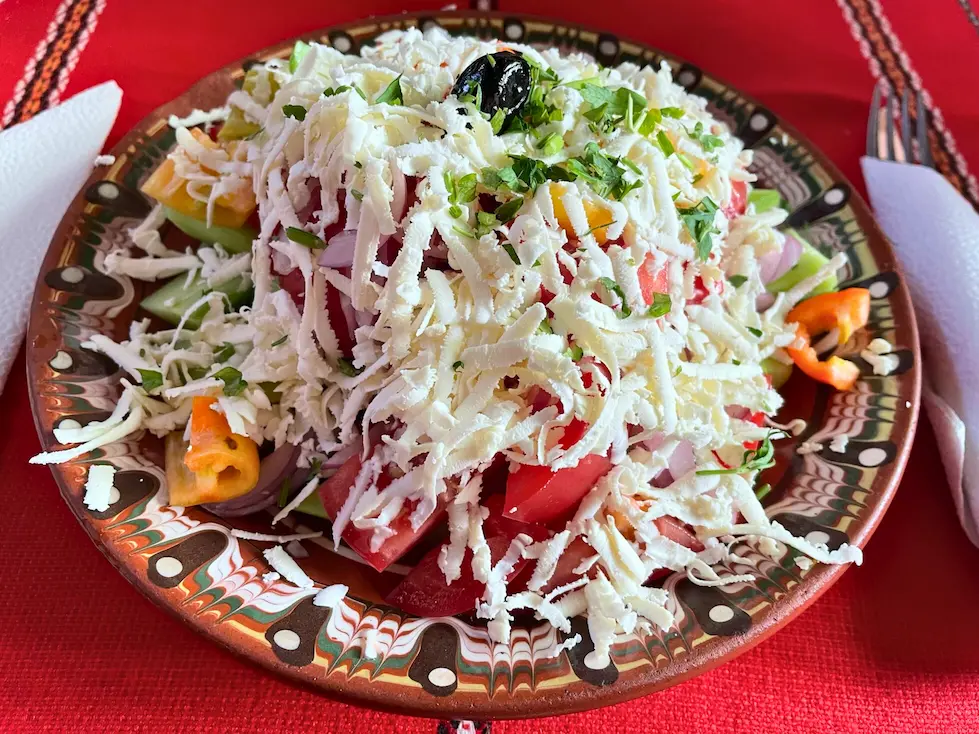
👉 For more insight into authentic Bulgarian cuisine and what to try, check out or comprehensive guide on Bulgarian Food
After lunch, take some time to stroll down Vitosha, enjoy the views of Vitosha Mountain in the distance, and maybe stop for a scoop of gelato or a quick espresso at Chucky’s Coffee House. This is Sofia at its most social—locals meeting for lunch, business types in tailored suits, teenagers in skate shoes, and elderly couples hand-in-hand.
Walking to the end of Vitosha Boulevard, you will come across the NDK (National Palace of Culture) (Google Maps). A massive, imposing communist-era building now used for concerts and events. Its surrounding urban park is a favorite among locals for evening strolls, rollerblading, and impromptu meetups.
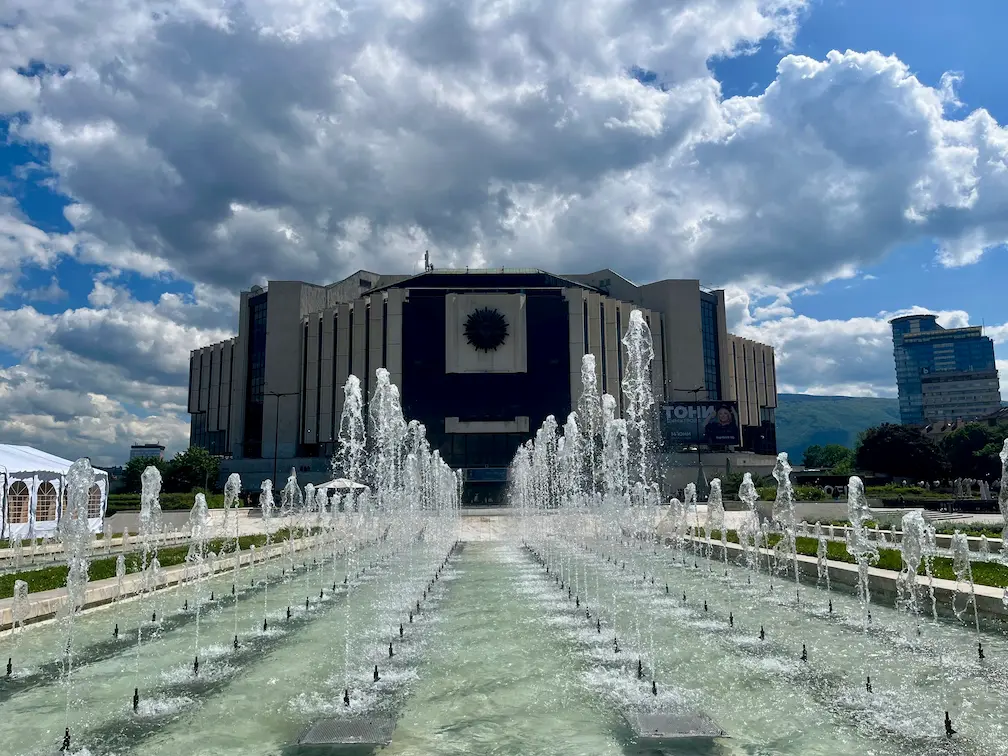
Afternoon: A UNESCO Treasure and a Mountain Breeze
Now it’s time to get a bit out of the centre. Hop in a taxi (they’re cheap and plentiful — use the Yellow app to order an official one) or take public transport (you have a couple of options, the most direct is Bus 61 or Tram 7/27 and Bus 64) toward Boyana Church, at the base of Vitosha Mountain.
This UNESCO World Heritage Site is one of Bulgaria’s most precious cultural treasures. Built in three stages between the 10th and 19th centuries, it is home to incredibly preserved frescoes from 1259—some of the best examples of medieval art in Eastern Europe. They are so vivid and expressive that are considered precursors to the Italian Renaissance.
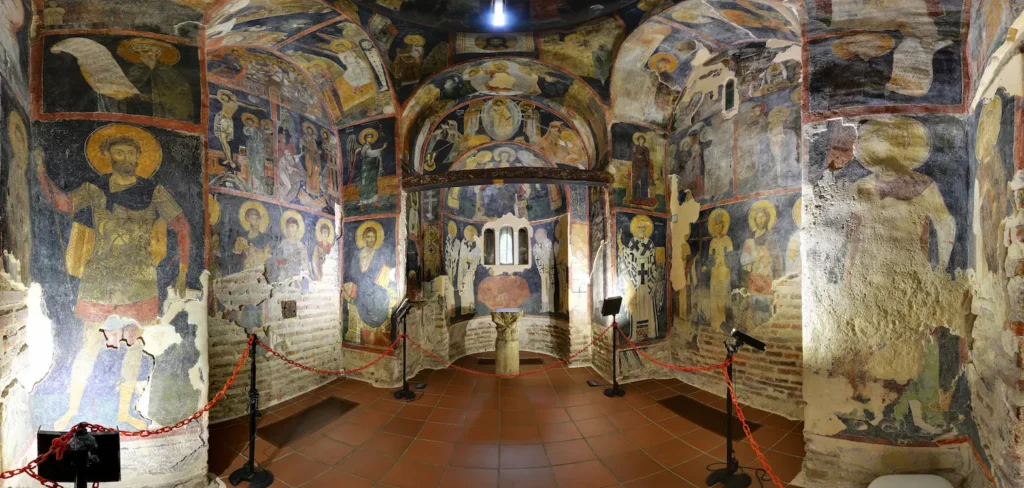
Because it’s small, entry is limited to short, timed visits (Max. 10 minutes), book ahead if possible. That, however, is easier said than done, considering that they don’t offer an online booking platform and payment is only by bank transfer. Visit their website to find out more about admittance and tickets.
It is a bit outside and getting there is tricky, if you can’t drive or take a taxi, however even a quick visit is worth it—the atmosphere is serene, and the frescoes are stunning!
If you have time afterwards, take a walk in the surrounding Boyana neighborhood, which feels more like a quiet mountain village than part of the capital city. It’s a peaceful contrast to the hustle of downtown.
Late Afternoon and Early Evening: Return to the City
Head back to central Sofia and get to Orlov Most (Eagle Bridge) and Sofia University. Two iconic spots in Sofia’s central layout. The bridge is named after the bronze eagles perched on each corner. It’s a key historical landmark and a great spot to snap photos. If it’s golden hour, this area is especially photogenic, with the warm light bouncing off Parliament’s sandstone facade and the trees in Borisova Garden casting long shadows.
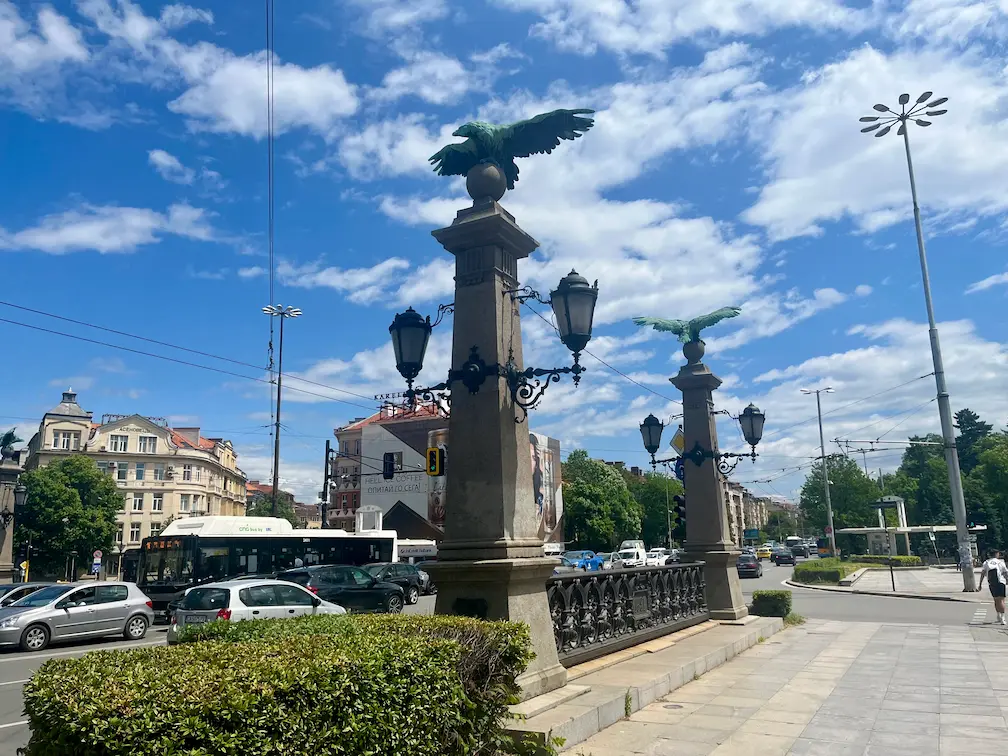
Now for dinner: you have two excellent choices depending on your mood.
Staria Chinar (Old Plane Tree)
📍Address: Knyaz Alexander Dondukov Blvd 71, 1527 Sofia, Bulgaria
For a more traditional and rustic experience, Staria Chinar is a fantastic choice for dinner. Tucked away from the busy boulevards, this cosy tavern-style restaurant serves authentic Bulgarian cuisine in a warm, wood-paneled setting. The grilled meats are excellent—especially the lamb chops and pork knuckle—and they pair beautifully with a glass of local red wine or a strong rakia. The staff are friendly, the portions generous, and the atmosphere feels like stepping into a Bulgarian countryside inn right in the heart of the city.
Raketa Rakia Bar
📍Address: Yanko Sakuzov Blvd 17, 1527 Sofia, Bulgaria
If you’re in the mood for something a little quirkier with a nostalgic twist, Raketa Rakia Bar is a must-visit. This retro-themed restaurant pays homage to Bulgaria’s socialist past, with vintage memorabilia, old propaganda posters, and a menu that celebrates traditional Balkan comfort food. As the name suggests, rakia is the star here—there are dozens of varieties to sample, from classic grape and plum to infused, small-batch specialties. The food is equally impressive, with hearty dishes like stuffed peppers, slow-cooked veal, and shopska salad. It’s a lively, fun place to wrap up your evening with a true taste of Bulgarian culture—past and present.
Or just head back to Shtastliveca
Yes, it is that good and the menu is big enough that a second visit won’t feel repetitive. You can go to the one on Vitosha Boulevard or, there is another one, just next to Sofia University. You can see its exact location here.
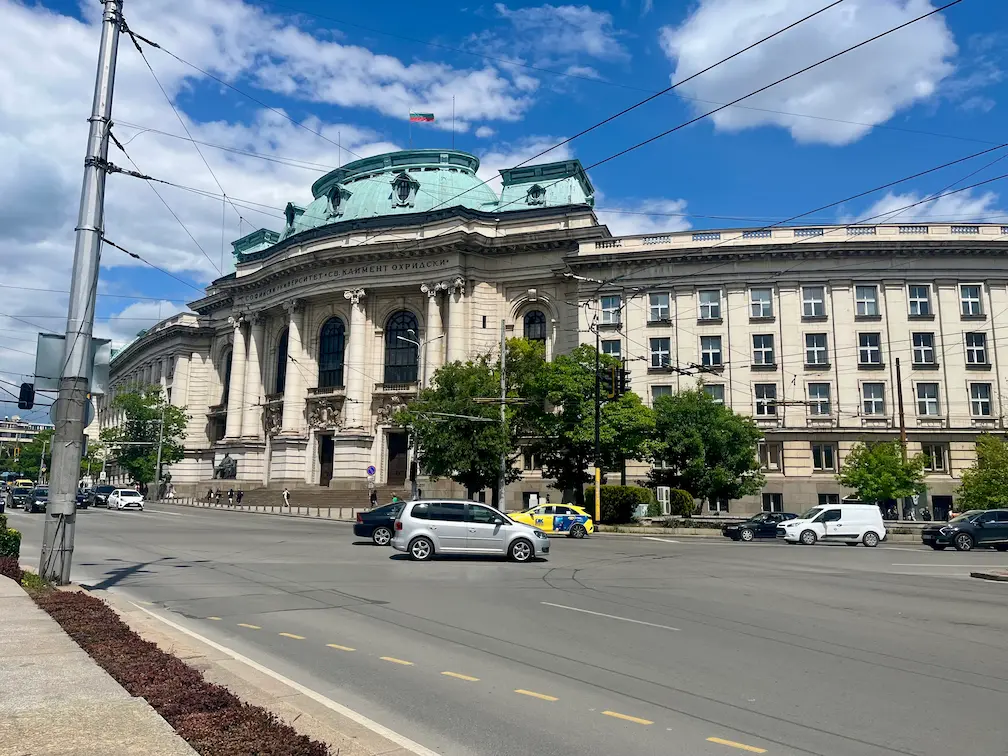
Late evening: Post-Dinner Walk or Nightlife
No matter where you dine, you can end your day with a leisurely stroll past: Aleksandar Nevski Cathedral, beautifully illuminated at night, or some of the other monuments you saw during the day.
Alternatively, if you’re still up for more, Sofia’s nightlife is surprisingly vibrant. Nearby streets like Shishman and Rakovski are packed with bars, speakeasies, and late-night cafés. Try a rakia bar if you want to go full Bulgarian—some offer flights of different regional rakias alongside small plates of pickled vegetables and cured meats.
For something more laid-back, pop into a craft beer bar like KANAAL.
Conclusion
Sofia is a city of layers. You can go from Roman ruins to Ottoman mosques, pass Soviet monuments, and end your day sipping craft cocktails on a pedestrian boulevard—all in a single afternoon. With just one day, you can scratch the surface and fall in love with its laid-back rhythm, curious contradictions, and deeply lived-in character.
This itinerary gives you a balanced mix of must-sees and offbeat stops like the Rakia Museum and The Red Flat, which bring Sofia’s quirky, complex charm into sharper focus.
And chances are, once you’ve had your first taste, you’ll want to come back for more.
Recent Posts
Where to stay in Borovets? Discover the best places for any budget, from luxurious SPA resorts to budget - friendly studios. Here are our top picks!
Is Bulgaria safe to visit? Yes! Learn about safety for solo travelers, families, driving, taxis & hiking in this local guide.
